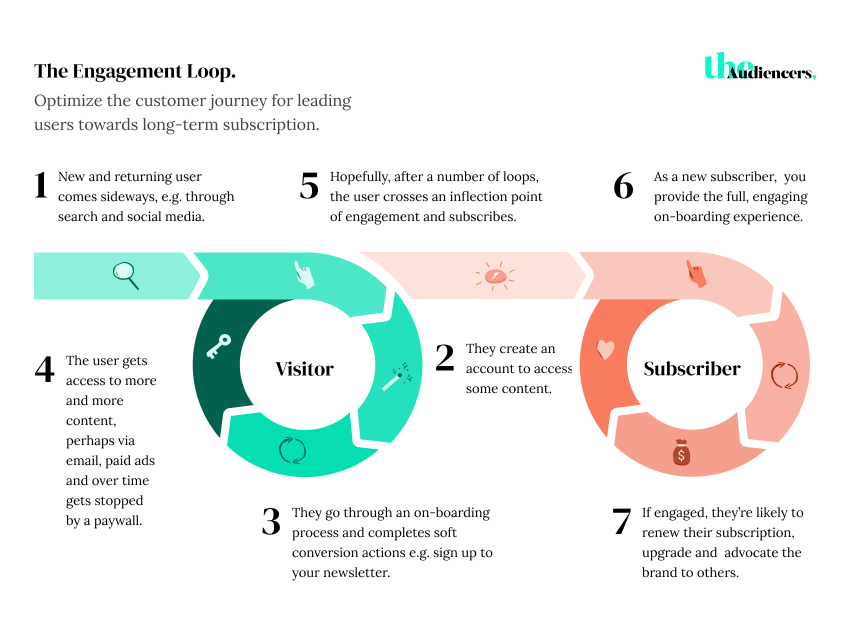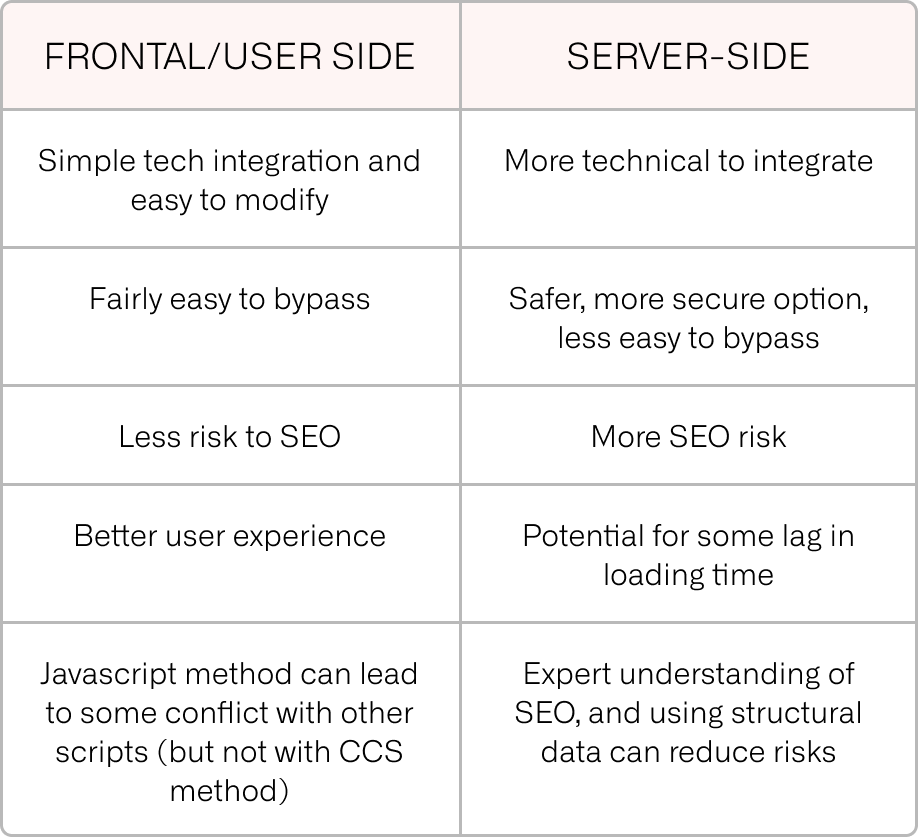To wrap it up: - Consider launching your subscription strategy ‘softly’, either by making the paywall optional, smoke testing your model or launching on only a small percentage of your audience - Soft conversion steps are hugely valuable for increasing engagement and reducing frustration - Your chosen blocking method and paywall-type will impact SEO differently - ensure sure you’re making the right decision based on your strategy, and weigh up the importance of optimizing SEO performance vs high conversion rates - Most importantly - test, test and test again
The biggest risk is not taking any risk… In a world that is changing really quickly, the only strategy that is guaranteed to fail is not taking risks.
Mark Zuckerberg
We’re all aware of the benefits of launching a digital subscription model, and perhaps most importantly of the necessity for publishers to consider this model.
However, it doesn’t come without risk…
- To your traffic
- To SEO performance
- To advertising revenue
- Or even to your reader’s view of you as a publisher
Given all this, how can you launch a hugely valuable subscription strategy without putting the above at risk?
1. Start with an optional paywall
Instead of fully blocking your content, you can start by leaving a ‘No thank you’ button on the wall, offering readers the option to continue reading.
Or even offer a free alternative to subscribing, such as account creation or signing up to your newsletter. This not only reduces frustration for your less regular readers, but also increases their engagement to encourage them to subscribe in the future.
Paris Match registration wall offers readers the option to create an account (the main CTA button) or watch a commercial (the alternative option)
Or simply a wall offering an article for free whilst also promoting your subscription offer (the next article will be blocked by a paywall).
2. Run a smoke test
The concept of a smoke test was originally coined when smoke was blown into new pipes or containers to check for leaks. In this situation, however, it refers to testing out the interest in a subscription strategy prior to launching.
Specifically, you announce to readers that you’re launching a premium offer, before actually launching. At this point you simply give them the chance to register their interest, or they can continue reading for free.
The idea is that you don’t actually have to launch after doing this, but you test the waters before actually going through with the launch.
Bio à la Une did this in the form of a data wall, informing readers that they’d soon be launching a premium offer and asking them to register their interest by signing up to the newsletter.
This also helps to educate readers on the idea of giving something in exchange for access to content. This kind of wall therefore lays the foundations, preparing users to be blocked when you do launch your subscription model.
3. Launch on only a small percentage of your audience
Try out your paywall on only a very small portion of your audience, reducing the risks of frustrating all traffic.
We’d recommend segmenting your audience based on level of engagement and initially launching on only your most engaged group. These readers are the most likely to subscribe, so the risks of launching a premium model for these users are very low.
Volatiles are the least engaged, whilst Fans have the highest level of engagement and so the greatest propensity to subscribe.
4. Employ a soft conversion strategy first
Given that conversion is a balance between engagement and frustration, it’s essential to increase engagement in order to reduce the risks of a user simply turning away from your site when faced with the paywall (i.e. being too frustrated).
Soft conversion steps, such as registration or newsletter signup, are hugely beneficial for gradually increasing engagement and moving users through the funnel towards higher ARPU (average revenue per user) and subscription.

This engagement loop sums it up nicely. Users move through the loops, gradually becoming more engaged and brining in higher revenue through your newsletter, registration and subscription.
Whilst newsletter walls are a great first step to encourage users to consume your content on a more frequent and regular basis, the benefits of registration (and de-anonymization) far outweigh those of newsletter sign up…
- First-party data collection
- Custom reader ID (you can track a single user across devices/visits)
- Increased ad revenue through targeting
- Provide more value to users which will lead to higher levels of engagement
Employing a registration wall is therefore recommended as a soft conversion step that will not only reduce the risks of launching a subscription strategy but also allow you to understand your audience and provide them with more value in exchange for registering.
5. Check the impact of your strategy on SEO
Your choice of blocking method and paywall-type will have an impact on SEO. However, there’s other factors to take into account and it’s ultimately a careful balance between optimizing SEO performance and converting your users into subscribers.
For instance, the paywall blocking method will impact not only SEO, but also ease of bypassing, tech requirements, potential conflict with other scripts and user experience.

As for the paywall-type, metered models are the easiest to deal with in terms of SEO as Google will be able to crawl all content (the text that’s both in front of the paywall as well as behind)
For Freemium or Hard models, however, the majority of text on paywalled content will be hidden from search engines and won’t be optimized for SEO. In this case, Google recommends a lead-in approach which gives users access to the first few lines of an article, whilst the rest is blocked by the wall. This gives Google some ‘key’ parts of the text to crawl.
Find out more about walls and SEO in Poool’s in-depth white paper.
6. Test, test and test again
The ultimate way to reduce the risks of launching your premium model? Testing.
Don’t just assume that your strategy will work (or not work for that matter). Instead, form a hypothesis, test, learn and iterate.
Some testing tips:
- Start testing before day 1 and continuously: avoid wasting time and money in launching something that will need changing further down the line or that won’t even work at all. And, don’t forget to keep testing continuously to optimize your strategy and learn about your audience
- Test your most risky hypothesis first: you have more to lose further down the line, so the key is to test your assumptions that have the highest risk first
- Always come back to your vision and how you’re going to achieve it – Will this idea (and the results from the test) help us achieve our goal?
